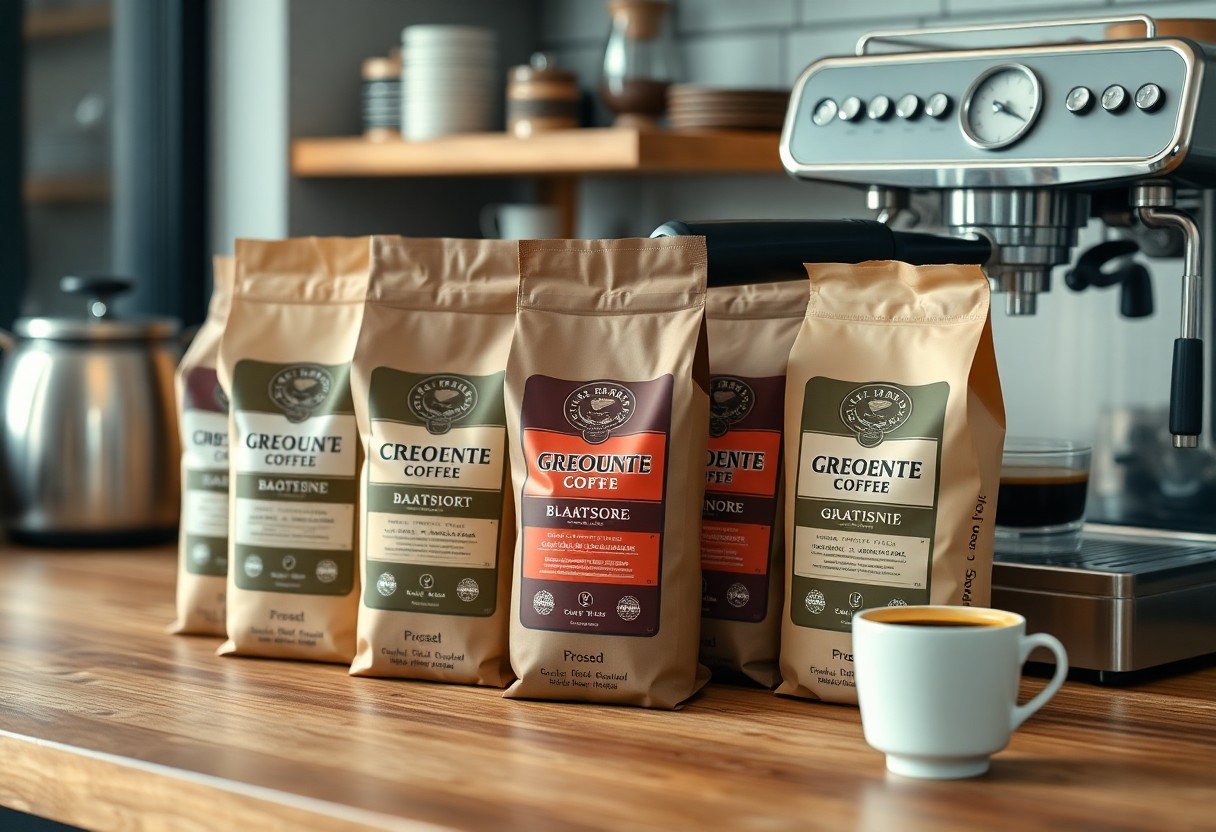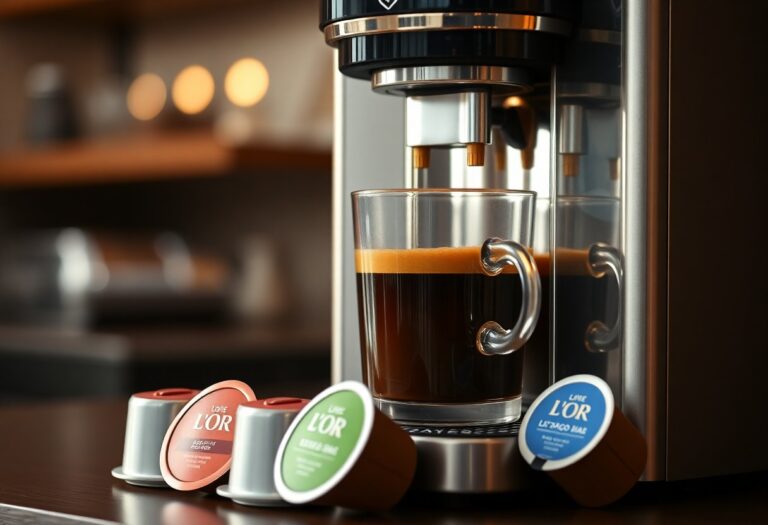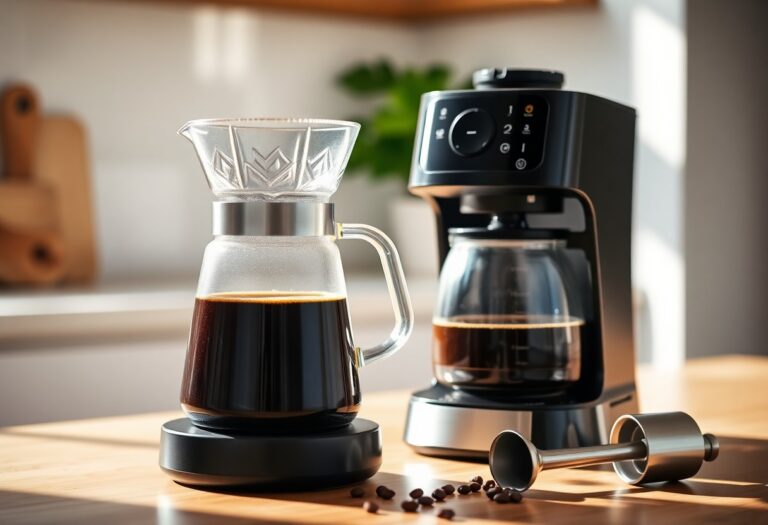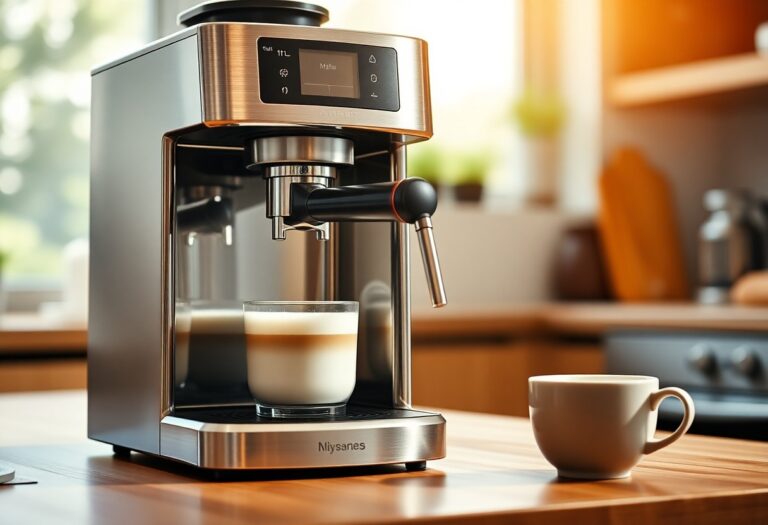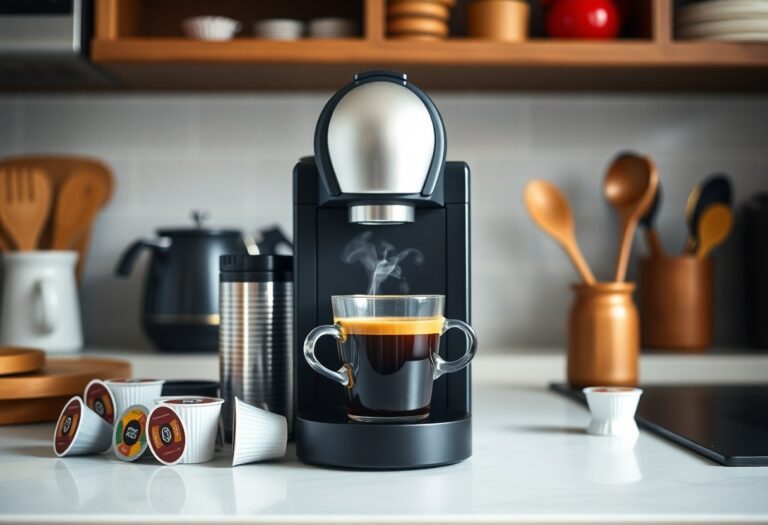What is the Best Ground Coffee for an Espresso Machine
Most coffee enthusiasts know that the quality of your espresso largely depends on the ground coffee you choose. Selecting the right blend can enhance the flavor, aroma, and overall experience of your brew. For the best results, opt for finely ground coffee with a rich flavor profile to complement your espresso machine. Additionally, consider the roast date and origin of the beans, as these factors significantly influence taste. In this guide, you’ll discover how to find the perfect ground coffee to elevate your espresso game.
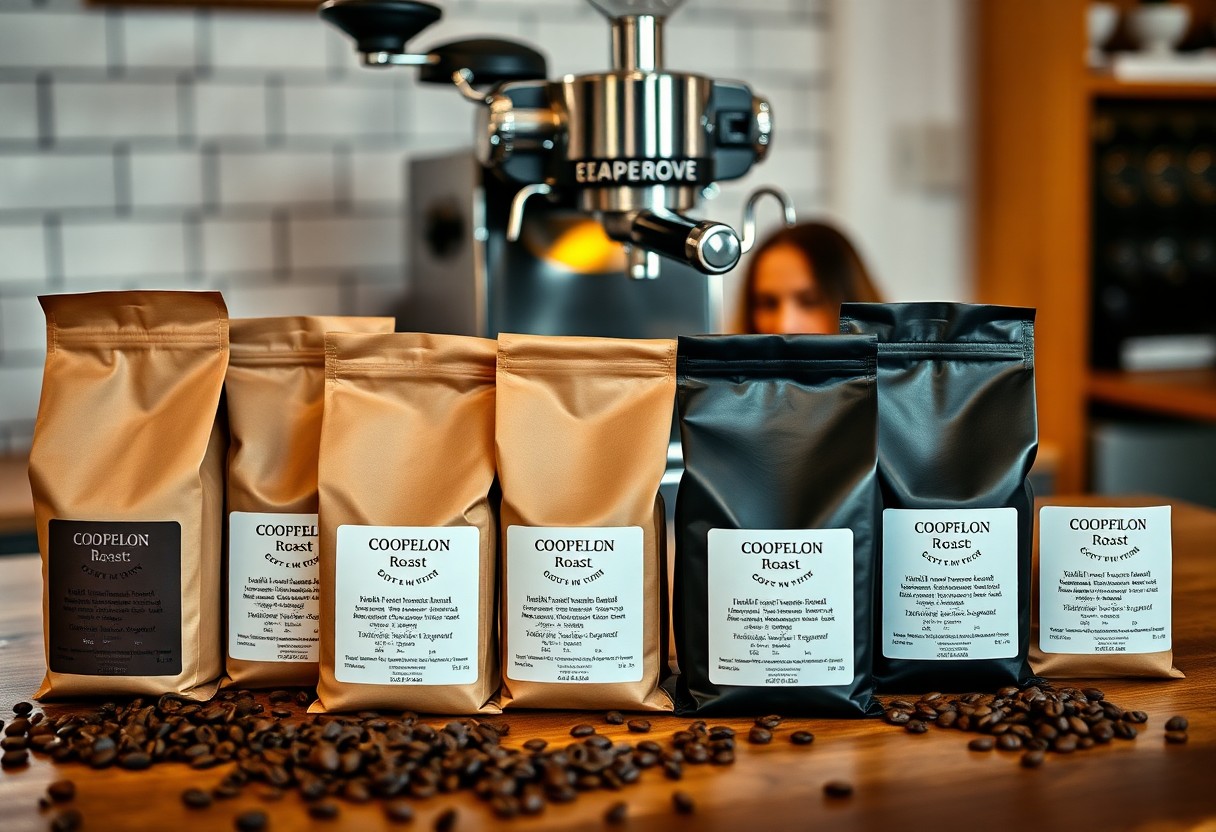
Key Takeaways:
- Look for coffee beans labeled as ‘espresso’, which are typically roasted darker to enhance flavor extraction.
- Choose a fine grind size, as it helps create the optimal resistance for espresso brewing, contributing to a rich crema.
- Opt for fresh, high-quality coffee beans that have been roasted within the last few weeks to ensure the best flavor and aroma.
- Experiment with different blends and origins, as these can influence the flavor profile, acidity, and body of your espresso.
- Store your ground coffee in an airtight container to preserve freshness and avoid exposure to moisture and light.
The Roast Profile That Makes or Breaks Espresso
The roast profile plays a significant role in the flavor and quality of your espresso. A good balance between acidity, sweetness, and body is crucial for crafting the perfect shot. You can dive deeper into the intricacies of choosing the right grind with A Guide To Ground Coffee For Espresso Machines, where you’ll find guidance on how roast levels directly influence your brew.
The Ideal Roast Level: Light, Medium, or Dark?
Your choice of roast level shapes the espresso experience. Light roasts often retain more acidity and fruitiness, which can highlight unique flavor notes. Conversely, medium roasts provide a balance of acidity and sweetness, while dark roasts emphasize richness and bitterness. Each type offers a different profile, providing you with numerous options to suit your palate.
How Roast Profile Impacts Flavor and Aroma
The roast profile significantly influences both flavor and aroma in your espresso. Light roasts, for example, are known for their bright, vibrant notes, often showcasing floral or fruity characteristics that can invigorate your taste buds. Medium roasts strike a delicious balance, allowing the inherent sweetness to shine through while still retaining some acidity. Dark roasts tend to dominate with deep, robust flavors, often accompanied by more pronounced bitterness and smoky undertones, which may overshadow the nuanced notes you may find in lighter varieties.
A study published in the Journal of Food Science indicates that volatile compounds released during roasting are responsible for the unique flavors and aromas associated with various coffee beans. As the roast level increases, the Maillard reaction and caramelization begin to alter these compounds, transforming the coffee’s profile. For instance, at lighter levels, you preserve more of the bean’s original characteristics, including delicate fruity notes. In contrast, darker roasts tend to develop savory and chocolatey flavors, losing some of the bean’s subtle complexities. Understanding these nuances will elevate your espresso-making game.
Grind Size: The Unsung Hero of Espresso Quality
Grind size greatly influences the extraction process of your espresso, often playing a more significant role than one might first think. A finely ground coffee allows for a quicker extraction, which is necessary for that rich, concentrated shot of espresso. Conversely, if the grind is too coarse, water will flow too quickly through the coffee, leading to under-extraction and a sour taste. For more insights on choosing the right grounds, check out Which Popular Coffee Brands Work Best For An Espresso ….
Finding the Perfect Grind for Optimal Extraction
Achieving the ideal grind for your espresso machine starts with understanding how fine or coarse your coffee needs to be. Aim for a consistency similar to table salt, allowing for a balanced extraction. You’ll often need to experiment, as different machines and beans may require unique adjustments. Taste your espresso regularly to refine your settings, ensuring you find that *sweet spot* where flavors shine without bitterness.
Common Mistakes in Grind Size that Ruin Your Shot
Many espresso enthusiasts fall prey to several misconceptions regarding grind size. Some may assume that a finer grind always produces a better shot, while others underestimate the importance of consistency. A diverse coffee blend requires specific adjustments and over-compacting can block water flow, leading to bitter shots. Making these errors can result in wasted beans and disappointing brews.
In the quest for that perfect shot of espresso, common grind size mistakes can derail your efforts. Using a *one-size-fits-all* approach to grinding coffee leads to uneven extraction. Moreover, grinding too fine can create channeling, which occurs when water finds paths of least resistance through the coffee, leaving some grounds under-extracted. On the flip side, a coarser grind might lead to a weak, watery shot. The key is to adjust meticulously based on your machine’s specifications and always taste-test for optimal results.
Bean Origin: Unpacking Flavor Profiles From Across the Globe
Your choice of coffee beans is akin to selecting wine; the origin can greatly affect the flavor profile of your espresso. Beans from different regions carry unique characteristics shaped by climate, elevation, and soil type. For instance, beans sourced from Central America often exhibit bright acidity with fruity notes, while African beans can surprise you with their floral and berry-like flavors. Understanding these nuances helps you find the perfect cup that matches your personal tastes.
Popular Regions and Their Signature Tastes
Each popular coffee-producing region offers distinct flavors. For example, Colombian beans are celebrated for their smooth, well-balanced profile, while Sumatra beans often deliver earthy and spicy undertones. Ethiopian coffees frequently feature bright acidity with notes of citrus and jasmine. Exploring these flavors can lead to delightful discoveries as you experiment with different bean origins in your espresso.
How Terroir Influences Your Espresso Experience
Terroir, the environmental factors that affect a crop’s phenotype, plays a significant role in shaping the taste of coffee beans. Variations in altitude, soil composition, and climate can lead to noticeable differences in flavor. For instance, beans grown at higher elevations tend to be denser and develop more complex flavor profiles, often yielding a sweeter and more nuanced espresso. By prioritizing high-quality, responsibly sourced beans from distinct terroirs, you can enhance your espresso experience exponentially.
Focusing on the concept of terroir can transform how you approach your coffee selections. For instance, consider a Colombian coffee grown in the high mountains of Antioquia, which may showcase caramel sweetness and mild acidity, versus a Costa Rican bean from the Central Valley, which offers bright citrus notes. Understanding these subtleties gives you the power to tailor your espresso to your preferences, allowing you to enjoy a rich tapestry of flavors sourced from around the world.
The Role of Freshness in Coffee Flavor
Freshness significantly impacts the flavor of your espresso. When coffee beans are roasted, they begin to release gases and lose their vibrant flavors over time. Opt for beans that have been roasted within the last few weeks to capture full-bodied notes and aromas. Aged coffee can taste dull and lack the rich complexity that fresh beans provide. Investing in freshness ultimately enhances the quality of your espresso experience, allowing you to savor the intended flavors of your chosen blend.
Why Freshly Roasted Beans Matter
Freshly roasted beans contain important oils and compounds that develop their unique flavors. These elements begin to degrade shortly after roasting, making the beans lose their character and taste. For espresso, which demands concentrated flavors, using freshly roasted beans ensures you exemplify the distinct notes of the coffee. A cup made from fresh beans will have a vibrant crema and a pronounced taste profile, enhancing your overall coffee experience.
Tips for Sourcing and Storing Fresh Coffee
To ensure you have the freshest coffee on hand, prioritize sourcing from local roasters or specialty coffee shops that roast on-site. Look for roast dates on packaging and aim to buy beans that have been roasted within the past month. For storage, keep your beans in an airtight container in a cool, dark place to preserve their flavor. Avoid purchasing large quantities, as the freshness will diminish over time. After securing quality beans, the way you store them is equally important.
- Choose local roasters to find quality fresh beans.
- Check for roast dates to ensure optimal freshness.
- Store beans in an airtight container away from light and moisture.
- Avoid buying in bulk; maintain optimal freshness by purchasing smaller amounts.
Choosing the right source for your coffee and how you store your beans can make a significant difference in your espresso’s quality. Look for reputable cafes or online retailers that guarantee quality. It’s best to buy small batches of beans that you can consume within a week or two to enjoy the maximum flavor and aroma. After establishing a routine for sourcing and storing, you’ll likely notice a marked improvement in your espresso’s taste.
- Shop from reputable retailers for quality assurance.
- Opt for smaller quantities to maintain maximum flavor.
- Use a cool, dark place for optimal storage.
- Purchase from local roasters for unique blends.
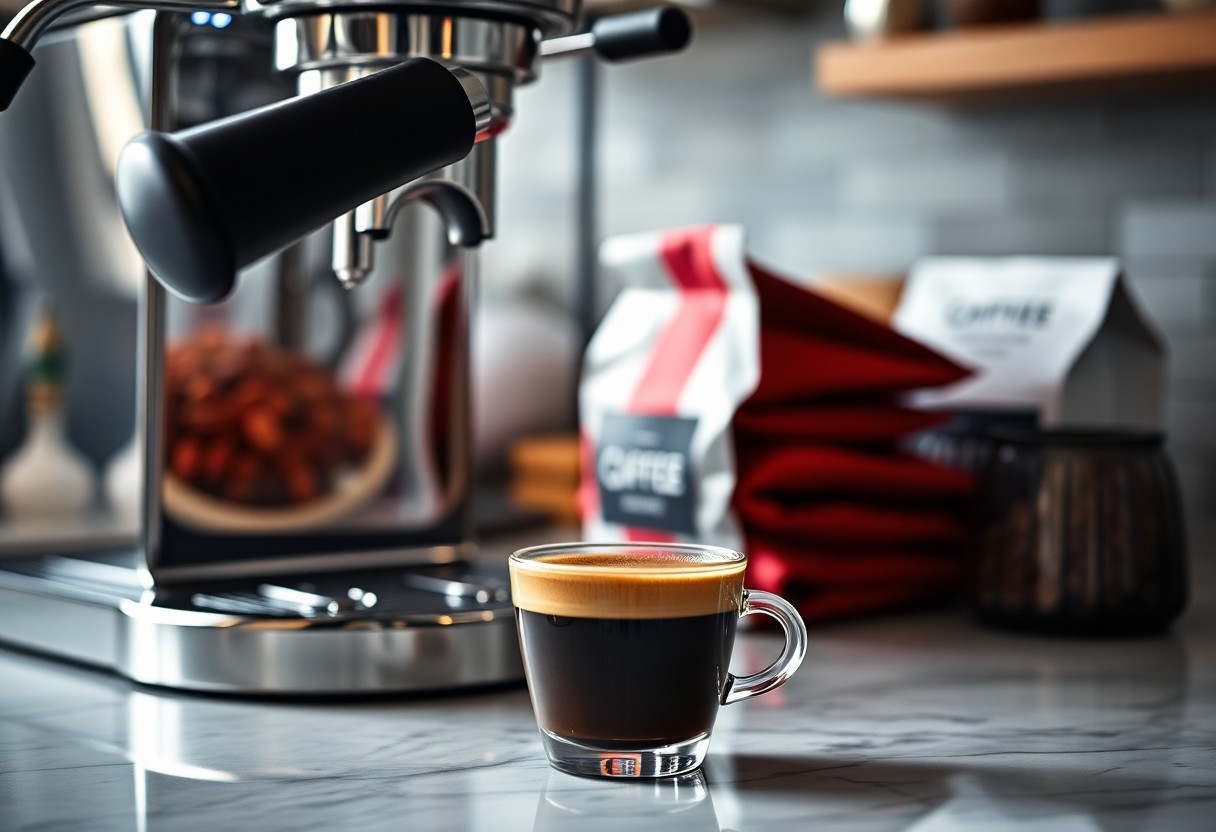
The Brewing Method: Why Your Espresso Machine Matters
Your espresso machine’s design and technology significantly influence the quality of your brew. Factors such as temperature stability, pressure consistency, and water flow can alter the extraction process, affecting how flavors develop in your coffee. High-end models often provide innovative features like PID temperature control and volumetric dosing, which allow you to fine-tune the brewing process for optimal results. Understanding how these characteristics translate to your coffee can enhance your overall espresso experience.
How Different Machines Affect the Espresso Extraction
The type of espresso machine you use plays a large role in the extraction quality. Manual machines allow for greater control over pressure and timing, while automated ones offer convenience and consistency. For example, machines with commercial-grade pumps (9 bars of pressure) can extract the crucial oils and aromatics from the coffee grounds more effectively than lower-pressure models. Each machine type has its own quirks, which can lead to varied flavors and textures in the final cup.
Maximizing Flavor Potential with Your Specific Setup
To truly unlock the potential of your coffee, tailor your grind size, dose, and tamping technique to match your espresso machine’s characteristics. Understanding your machine’s specifications allows you to adjust variables such as water temperature and brewing time. For instance, with a thermoblock machine, you might need a finer grind to ensure proper extraction, whereas a lever machine might benefit from a coarser grind and a slower extraction time for rich, creamy shots.
Experimenting with different parameters can reveal the unique possibilities of your espresso machine. If you have a machine that excels in temperature stability, playing with a slightly higher brewing temperature might highlight the bright, floral notes in your coffee. On the other hand, a more forgiving machine may require you to focus on the grind size and pressure applied during tamping to achieve that perfect shot. Invest some time in dialing in your specific setup; you’ll discover delightful nuances in flavor that elevate your coffee experience.
To wrap up
Summing up, choosing the best ground coffee for your espresso machine is imperative for achieving that rich, robust flavor you desire. Look for finely ground coffee beans that are specifically labeled for espresso use, and pay attention to the roast level—medium to dark roasts typically yield the best results. Don’t hesitate to experiment with different origins and blends until you find the perfect match for your taste. With the right coffee, you’ll elevate your espresso experience and impress everyone with your barista skills.
FAQ
Q: What type of coffee bean is best for espresso?
A: For espresso, the best types of coffee beans are typically Arabica and Robusta. Arabica beans offer a more complex flavor profile, while Robusta beans provide a richer crema and a stronger taste. Many espresso blends use a combination of both to balance flavors and achieve the desired espresso characteristics.
Q: What grind size should I use for espresso?
A: The ideal grind size for espresso is fine, similar to granulated sugar. This fine grind allows for optimal extraction of the coffee oils and flavors during the short brewing time of espresso. If the grind is too coarse, the water will flow through too quickly, resulting in a weak and under-extracted shot. Conversely, if it’s too fine, it can lead to over-extraction and bitterness.
Q: How fresh should ground coffee be for espresso?
A: Freshness is key when it comes to ground coffee for espresso. Ideally, coffee should be ground just before brewing to ensure maximum flavor and aroma. If you must use pre-ground coffee, aim to choose a product that has been packaged within a week or two of grinding. Storing coffee in an airtight container in a cool, dark place can help maintain its freshness longer.
Q: Are there specific roast levels recommended for espresso?
A: Espresso is commonly associated with medium to dark roasts, which tend to highlight the rich, bold flavors suitable for espresso. Medium roasts strike a balance between acidity and body, while dark roasts emphasize deeper, smoky notes and a fuller body. Preference may vary, so experimenting with different roast levels can help find the taste that best suits individual palates.
Q: Can I use flavored coffee beans for espresso?
A: Yes, you can use flavored coffee beans for espresso, although it’s necessary to choose high-quality beans. Flavored coffee may not produce the same depth of flavor as traditional espresso, but it can offer a unique experience. Keep in mind that flavored beans may add unexpected sweetness or change the texture of the crema. It’s best to experiment with flavored blends to see if they align with your taste preferences.

